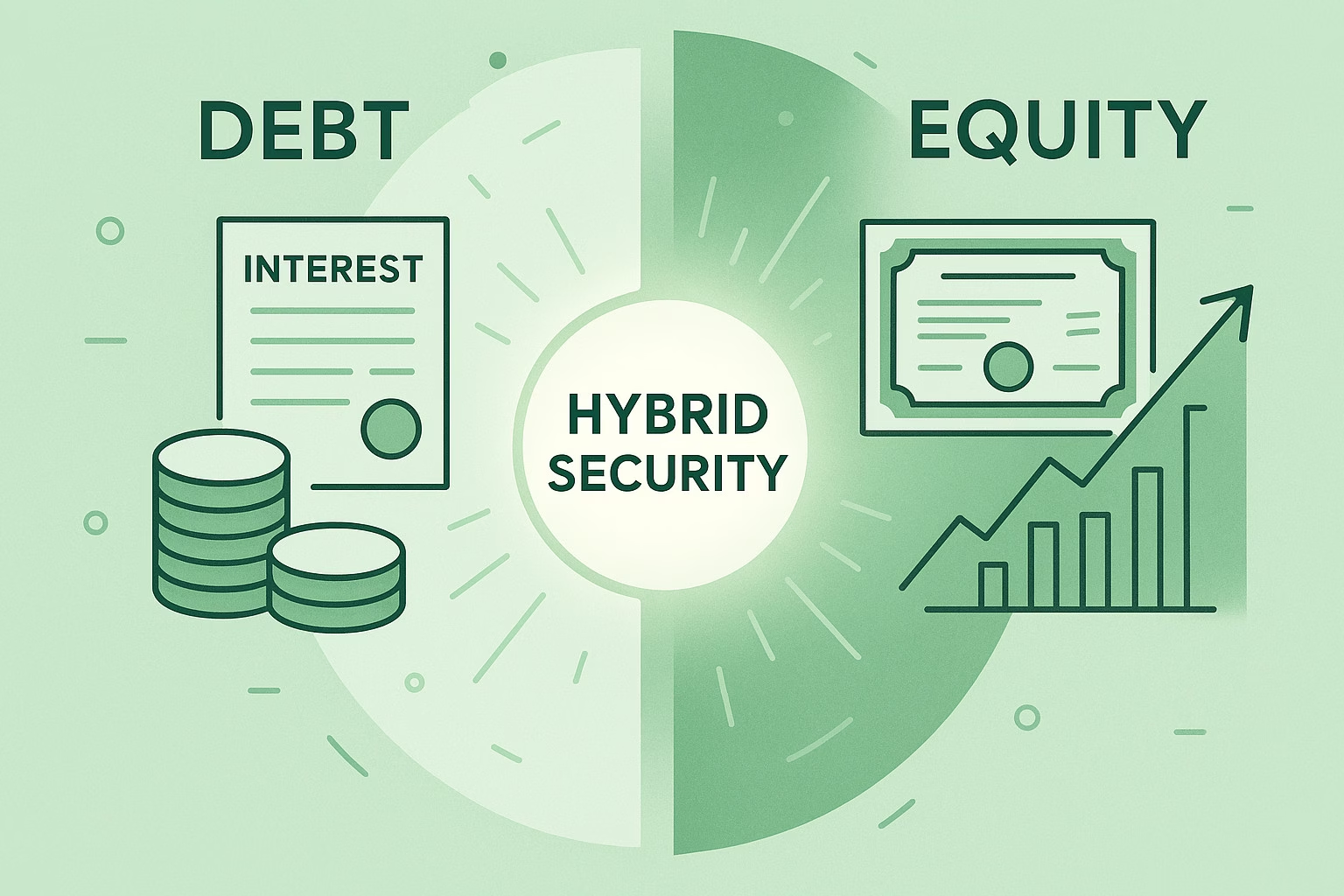Modern finance isn’t always black and white — and that’s especially true when it comes to hybrid securities. These instruments combine characteristics of both debt and equity, making their accounting treatment more complex than traditional financing tools.
Hybrid Security Accounting refers to how companies recognize, classify, and measure these instruments in their financial statements to reflect their dual nature.
💡 What Are Hybrid Securities?
A hybrid security is a financial instrument that has features of both debt (like fixed returns or maturity dates) and equity (like ownership or conversion rights).
They offer flexibility for both issuers and investors — providing predictable income like bonds, while allowing participation in upside potential like shares.
Common examples include:
- Convertible Bonds – Bonds that can be converted into a fixed number of shares.
- Redeemable Preference Shares – Shares that pay dividends but may be repurchased later.
- Perpetual Notes – Instruments that have no fixed maturity but pay interest indefinitely.
- Mezzanine Financing Instruments – Subordinated debt with equity-like features such as warrants.
🧾 The Accounting Challenge
The main challenge in hybrid security accounting is determining how much of the instrument should be treated as liability and how much as equity.
This distinction affects:
- Reported leverage and financial ratios.
- Interest or dividend expense recognition.
- Profit and loss presentation.
Under IFRS (IAS 32) and US GAAP (ASC 480), issuers must analyze the contractual terms of the instrument to decide if it should be:
- Entirely liability,
- Entirely equity, or
- Split into two components (compound instrument).
🧮 Example: Convertible Bond
Suppose a company issues a $1,000,000 convertible bond with a 5-year term and 4% annual interest.
- Investors can convert the bond into 10,000 shares anytime before maturity.
Step 1 – Identify components:
- The debt portion represents the present value of future interest and principal payments.
- The equity portion represents the value of the conversion option.
Step 2 – Journal entry at issuance:
| Account | Debit | Credit |
|---|---|---|
| Cash | 1,000,000 | |
| Convertible Bond Liability | 950,000 | |
| Equity – Conversion Option | 50,000 |
This reflects a compound financial instrument — partly liability (the debt obligation) and partly equity (the option to convert).
Step 3 – Subsequent accounting:
- The liability portion is measured using the effective interest method, recognizing interest expense over time.
- The equity portion remains fixed until conversion or expiration.
📊 Why Hybrid Security Accounting Matters
- Accurate Financial Reporting – Misclassification can distort leverage ratios and profitability.
- Investor Clarity – Helps investors understand the real risk-return mix of the instrument.
- Strategic Financing – Companies can design hybrids to attract investors without losing control or breaching debt covenants.
- Regulatory Compliance – Proper classification ensures alignment with IFRS or GAAP requirements.
🧠 Simple Analogy
Think of a hybrid security as a “two-in-one financial product” — like a bond with a built-in stock option. The accounting challenge is deciding how much belongs to the “loan” side and how much belongs to the “ownership” side.
🪙 Key Takeaway
Hybrid Security Accounting ensures that instruments combining debt and equity are reported transparently. By correctly identifying their components, companies provide a true picture of their financing structure, helping analysts, regulators, and investors make informed decisions.

